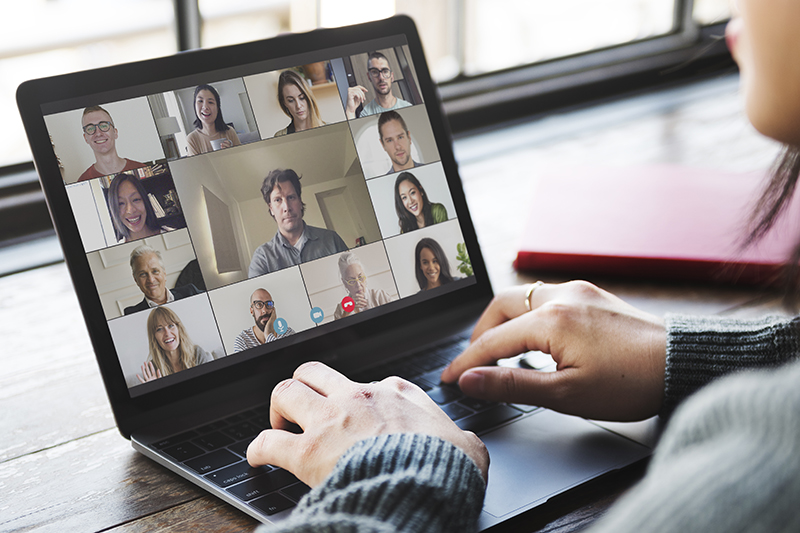A great deal of business tech-related articles these days start with a reference to the Covid-19 pandemic. Why? That’s because the pandemic has been such a disruptor to the way businesses were operating. The major area of disruption has been communication. Conference calls have replaced direct communication. While conference calls have already been the mode of communication between the companies and clients as well as outsourcing partners, they are increasingly being used for internal communication as well. That’s why conference call transcription is such a sought-after service.
Despite the successive waves of the pandemic, the brunt of Covid-19 has ended. Still, the new trends that were put in place could continue as their efficiency is being realized. Remote workplaces and conference calls are two of these most prominent trends. Deals can be made or broken, based on conference calls. Employees can also be given vital instructions. So, you really need to get this right.
How Conference Call Etiquette Helps in Producing the Best Outcome
Professional transcription services transcribe videoconferences and conference calls for businesses in diverse sectors. However, it takes some effort to ensure these can effectively replace face-to-face communication.
Effective communication requires not just the flawless technical performance of the devices involved, but also the right body language. Transparency in communication is also essential. So let’s take a look at what’s needed to make the communication satisfy all the members involved, and fulfil the desired objectives. These steps make up what you could call “conference call etiquette”:
Ensure Technical Efficiency of All the Components
The first step is to ensure that all the concerned devices are working properly. You don’t want to drop calls to annoy participants at the other end:
- Your microphone and computer must have no gremlins. Ensure that the other participants at your end have their mobile phones turned on and functioning well. Their headphones also need to be working well, since listening via the headphone and speaking via the attached microphone ensures greater clarity. Internet connectivity should be fast and without interruptions. So, ensure your system and those of the participants at your end are connected to your office’s Wi-Fi hotspot. Phone systems should provide almost 99% up times, which would eliminate the risk of your calls dropping. You also need to ensure that your provider offers the HD voice feature so that your voice quality is enhanced and you don’t face the annoying static that disrupts conference calls.
Apologize for Voice Disruptions
Transcription outsourcing companies often report difficulty in transcribing audio files with background noise. Despite your best efforts, there could sometimes be disruptions in the voice. This usually happens when you’re not carrying out the conference call indoors, are travelling, or are in some outdoor location. In any case, you need to make it clear to those at the other end that you’re in someplace where there is a great deal of background noise. Apologize in advance so that the others would know that you aren’t responsible for the disturbances. Otherwise, those at the other end would feel that you haven’t taken this conference call seriously and are disrespectful. Such impressions would compromise your communication from the start.
Behavioral Aspects of Conference Calls
Now that we’ve dealt with the technical elements, let’s look at the other important aspects of conference call etiquette:
Introduce Yourself Before Speaking
Usually, at the start of the conference call, the moderator would introduce everyone present at their side. Despite that, before you start to speak, it is important that you identify who you are. That will help clear any confusion on the other end as to who is speaking. If someone from the other side speaks without identifying themselves, you can wait for the person to finish speaking and then politely request their name.
Don’t Introduce Yourself If You Come in Late
Alternatively, you don’t need to introduce yourself when you’re late to a conference call. Introducing when you join late causes a disturbance, particularly when someone is talking. Even if you don’t introduce yourself, the call software would emit a sound which would tell everyone that someone has joined. The username would be displayed and the moderator could introduce you after the person on the other end has stopped speaking. If the person stops the call and asks who has joined, you can say who you are. However, that still could disrupt the flow. So, there are ways to mute the joining sound. The moderator could take care of that.
Using “Mute” When Needed
Participants should know where the “mute” button is. They should use it when someone else is speaking and there are background noises coming from their side, particularly when they’re outdoors or at home.
- When someone else speaks, you don’t need to keep any audio coming from your side. That could spoil the experience for everyone involved since they wouldn’t be able to hear clearly. It would also annoy the speaker, Ideally, you should participate in a conference call from a quiet room, but sometimes sounds such as the cry of a baby, a calling bell, or someone watching television could come into the call. Since you only need to hear when someone else speaks, you can mute your audio. If the background sound refuses to die, though you should try everything you can to cut it or move away from the location to a quieter place, you can keep yourself mute for the entire videoconference and just type your inputs, questions, suggestions, etc through the call software’s chat option. You can also email them.
Don’t Consume Food during a Conference Call
Video may not be present in a conference call. But a lot of what you do can come through to the call. Eating, for example, can quite easily be felt by others in the conference since the sounds of munching and ruffling bags of chips in the background are all clearly audible. You should at least turn on the mute button to ensure those sounds don’t get through. However, it is better to avoid eating. You should absolutely not eat while talking as well.
Importance of Body Language Even Without Video
Finally, maintain good body language. In a video conference, basically a conference call with a video feature as well, people can see how you and your team are sitting. They can watch your posture. However, research states that even in a conference call where you don’t see the participants, your posture is reflected in your voice. Ensure that you’re in a sitting posture and are upright since that will reflect how energetic you are when you speak. Standing while talking also brings out a positive impression, according to communication expert Dianna Booher.
With these basic steps, you can ensure the conference call fulfils all your desired objectives of getting the message across. This would eventually result in greater client satisfaction and better employee performance. Conference call transcription providers can transcribe conference calls so you can refer to the points discussed, strategies formed and decisions made in these calls, whenever you need them.




